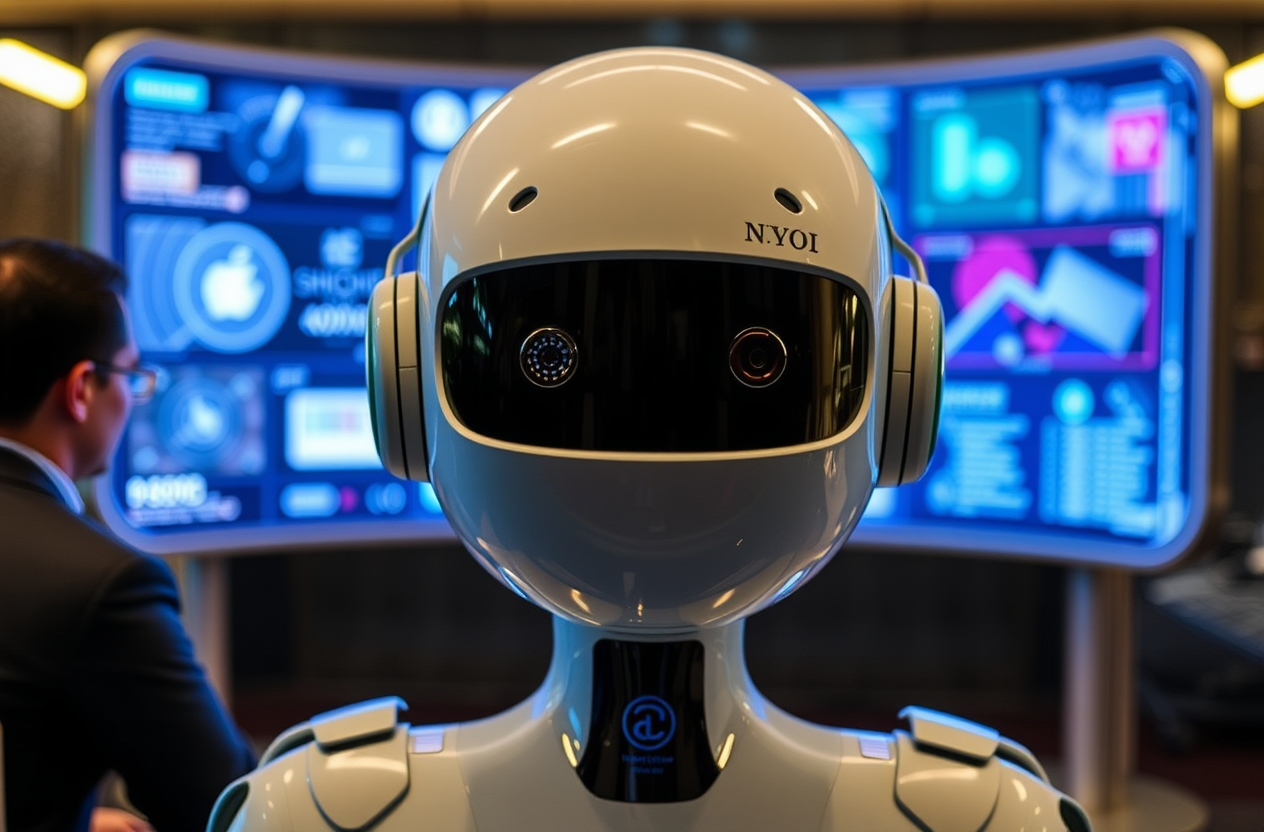
I. Introduction
A. Overview of Technological Evolution
Technology has always been a driving force behind societal change. From the invention of the wheel to the rise of the internet, each leap forward has transformed how we live, work, and interact. As we stand on the brink of a new decade, it’s clear that we are entering another transformative era.
B. Importance of Understanding Future Trends
Understanding the trends that will shape our future is crucial. These trends influence industries and affect our daily lives, from how we communicate to how we manage our health. By staying informed, we can better prepare for the changes and adapt to new realities.
C. Purpose and Structure of the Article
This article will explore five key technological trends expected to shape our world in the next decade: Artificial Intelligence and Machine Learning, the Rise of Remote Work and Digital Collaboration, the Internet of Things (IoT) and Smart Cities, Renewable Energy and Sustainable Technology, and Biotechnology and Health Tech Innovations. Each section will delve into these trends’ advancements, impacts, and challenges.
II. Artificial Intelligence and Machine Learning
A. Advancements in AI Capabilities
1. Natural Language Processing Improvements
Natural Language Processing (NLP) has made significant strides, allowing machines to understand and respond to human language more effectively. This means better communication with smart assistants and more accurate translations.
2. Enhanced Image and Video Recognition
AI’s ability to recognize images and videos has improved dramatically. This technology is now used in various applications, from security systems to social media platforms, making it easier to tag and categorize content.
3. AI in Predictive Analytics
Predictive analytics powered by AI helps businesses forecast trends and consumer behavior. This capability can lead to more informed decision-making and improved customer experiences.
B. AI in Everyday Life
1. Smart Assistants and Home Automation
Smart assistants like Alexa and Google Assistant are becoming integral to our homes, managing everything from lighting to grocery lists, and making daily tasks more convenient.
2. AI in Healthcare and Diagnostics
In healthcare, AI is revolutionizing diagnostics. Algorithms can analyze medical images and patient data to assist doctors in making quicker and more accurate diagnoses.
3. Personalized Learning Experiences
In education, AI is enabling personalized learning experiences, adapting content to meet individual student needs and learning styles, which can enhance educational outcomes.
C. Ethical Considerations and Challenges
1. Data Privacy Concerns
As AI systems collect vast amounts of data, concerns about privacy and data security are growing. Users must be aware of how their information is used and protected.
2. Bias in AI Algorithms
Bias in AI algorithms can lead to unfair outcomes, particularly in areas like hiring and law enforcement. Addressing these biases is essential to ensure equitable technology use.
III. The Rise of Remote Work and Digital Collaboration
A. Evolution of Remote Work Technologies
1. Video Conferencing Tools
Video conferencing tools like Zoom and Microsoft Teams have become staples for remote work, enabling face-to-face communication regardless of location.
2. Project Management Software
Project management software such as Trello and Asana helps teams collaborate effectively, keeping projects organized and on track.
B. Impact on Work Culture
1. Flexibility and Work-Life Balance
Remote work offers greater flexibility, allowing individuals to balance personal and professional responsibilities more effectively.
2. Changes in Team Dynamics
Teams are adapting to new dynamics, with remote collaboration fostering a culture of trust and accountability.
C. Future of Office Spaces
1. Hybrid Work Models
Many organizations are adopting hybrid work models, combining remote and in-office work to provide flexibility while maintaining team cohesion.
2. Redesigning Physical Workspaces
Office spaces are being redesigned to accommodate collaborative work, with open layouts and shared spaces becoming more common.
IV. The Internet of Things (IoT) and Smart Cities
A. Growth of IoT Devices
1. Home Automation Systems
IoT devices are increasingly used in home automation, allowing homeowners to control lighting, security, and appliances remotely.
2. Wearable Technology
Wearable technology, such as fitness trackers and smartwatches, is becoming more prevalent, providing users with real-time health data and insights.
B. Smart City Initiatives
1. Traffic Management and Smart Transportation
Smart city initiatives are using IoT to improve traffic management, reduce congestion, and enhance public transportation systems.
2. Energy Efficiency and Smart Grids
Smart grids are optimizing energy distribution, allowing for better management of resources and reducing waste.
C. Challenges and Security Concerns
1. Data Security and Privacy Issues
As IoT devices collect vast amounts of data, ensuring security and privacy is a significant challenge that must be addressed.
2. Interoperability of Devices
The lack of standardization among IoT devices can lead to compatibility issues, hindering their effectiveness.
V. Renewable Energy and Sustainable Technology
A. Innovations in Renewable Energy Sources
1. Solar and Wind Energy Advancements
Advancements in solar and wind energy technologies are making these sources more efficient and cost-effective, paving the way for broader adoption.
2. Energy Storage Solutions
Innovations in energy storage, such as advanced batteries, are crucial for managing renewable energy supply and demand.
B. Impact on Climate Change
1. Reducing Carbon Footprint
The shift to renewable energy is essential for reducing our carbon footprint and combating climate change.
2. Sustainable Transportation Solutions
Electric vehicles and public transportation innovations are contributing to more sustainable urban mobility.
C. Government Policies and Global Initiatives
1. International Agreements and Goals
Global agreements, such as the Paris Agreement, are driving nations to commit to reducing greenhouse gas emissions and investing in renewable energy.
2. Incentives for Clean Technology Adoption
Governments are offering incentives to encourage the adoption of clean technologies, making it easier for businesses and individuals to transition.
VI. Biotechnology and Health Tech Innovations
A. Advances in Genetic Engineering
1. CRISPR and Gene Editing
CRISPR technology is revolutionizing genetic engineering, allowing for precise modifications that can lead to breakthroughs in medicine and agriculture.
2. Personalized Medicine Approaches
Personalized medicine is tailoring treatments to individual genetic profiles, improving outcomes, and reducing side effects.
B Final Thoughts on the Future of Technology
The future of technology is not just about innovation; it’s about how we choose to use these advancements to create a better world for everyone.
VIII. FAQs
A. What are the most significant technological trends to watch in the next decade?
The most significant trends include advancements in AI, the rise of remote work, the growth of IoT, renewable energy innovations, and breakthroughs in biotechnology.
B. How will these trends impact daily life and work?
These trends will enhance convenience, improve health outcomes, and create new job opportunities while also presenting challenges that require adaptation.
C. What are the potential risks associated with these technological advancements?
Potential risks include data privacy concerns, job displacement, and the need for equitable access to new technologies.


